|
The origin of Rinyouji came from Kukai(空海) who is known as Kobo Daishi (弘法大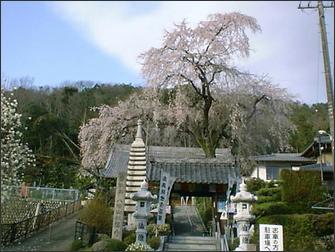 師)and established Shingon
Buddhism(真言). While he was spreading the teachings of Shingon Buddhism throughout Japan,
he settled here for a few years. There was a shrine called ’Hachiman Shrine’(It is called Iwanonishi Shrine
nowadays) (八幡神社現在の伊波乃西神社)located in a corner of the west side of Iwata Haba town Gifu city(岐阜市岩田羽場). When Kobo Daishi
was 23 years old, he built a temple to the south of the shrine and put a mandala(曼荼羅) at the back of
Yakushinyorai(薬師如来)Statue which he made himself. 師)and established Shingon
Buddhism(真言). While he was spreading the teachings of Shingon Buddhism throughout Japan,
he settled here for a few years. There was a shrine called ’Hachiman Shrine’(It is called Iwanonishi Shrine
nowadays) (八幡神社現在の伊波乃西神社)located in a corner of the west side of Iwata Haba town Gifu city(岐阜市岩田羽場). When Kobo Daishi
was 23 years old, he built a temple to the south of the shrine and put a mandala(曼荼羅) at the back of
Yakushinyorai(薬師如来)Statue which he made himself.
In 814, at the age of 41, he came here again and prayed in front
of Yakushinyorai Statue for 7 days. At
the same time, he built Osshinji (乙津寺)in Nishikagashima(西鏡島) town Gifu city and prayed in front of Yakushinyorai Statue for 7
days. He subsequently founded Ganjyouji (願成寺)in Akutamioobora(芥見大洞) town Gifu city, and
carved Dainichinyorai.(大日如来) When he left here he carved a
life-size statue of himself for substitution because lots of believers felt sad
about his farewell.
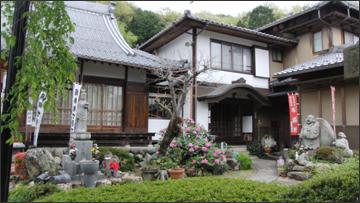 Since
then, the temple was called ‘Kannondou’(観音堂)and moved to present location Habaukaiya (羽場鵜飼屋)town due to the leader
of the time. However no one lived in
this temple for a long time, so it was ruined and valuable Buddihist statues
were exposed to rain. In March of 1665,
a monk named Senkou(宜公和尚) came here and felt sad about what he saw. Then he rebuilt it and returned it to its previous name ‘Hachimanzan Rinyouji’(八幡山林陽寺). In September of the same year, he invited his
master ‘Ryounengenchozenji’(了然玄超禅師) and let him be the first
chief priest of this temple. At the same
time, it changed to a SotoZen (曹洞宗)temple. Since
then, the temple was called ‘Kannondou’(観音堂)and moved to present location Habaukaiya (羽場鵜飼屋)town due to the leader
of the time. However no one lived in
this temple for a long time, so it was ruined and valuable Buddihist statues
were exposed to rain. In March of 1665,
a monk named Senkou(宜公和尚) came here and felt sad about what he saw. Then he rebuilt it and returned it to its previous name ‘Hachimanzan Rinyouji’(八幡山林陽寺). In September of the same year, he invited his
master ‘Ryounengenchozenji’(了然玄超禅師) and let him be the first
chief priest of this temple. At the same
time, it changed to a SotoZen (曹洞宗)temple.
In September of 1865, a monk named Tensyuusatudou(天洲薩道和尚) from Nyuukawasyousouji
in Hida(飛騨丹生川 正宗寺) town took over this temple. He
spent his own expense to repair the facilities and also he made an effort to attract
more people to the temple.
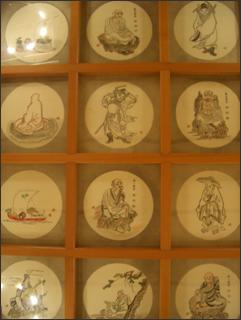 In
October of 1891, although the main hall was damaged by the Great Noubi
Earthquake(濃尾大震災),
it was rebuilt thanks to a great amount of contributions from the town in 1920.
The path way to the temple, cemetries and a reception hall were maintained
and improved from 1973 to 1979. The next significant event happened in 1984, when a major repair on the
roof was made as a celebration of the inauguration of the current chief
priest. In 1992, the
priest’s quarters were rebuilt and 160 Japanese-style paintings which were
painted by the 11th chief priest Genpou (玄峰和尚)were put on the ceiling of a large hall. Three statues done by Enkuu (円空)which were discovered during the maintenance and improvement are
enshrined inside the temple as well as other Japanese
paintings. In
October of 1891, although the main hall was damaged by the Great Noubi
Earthquake(濃尾大震災),
it was rebuilt thanks to a great amount of contributions from the town in 1920.
The path way to the temple, cemetries and a reception hall were maintained
and improved from 1973 to 1979. The next significant event happened in 1984, when a major repair on the
roof was made as a celebration of the inauguration of the current chief
priest. In 1992, the
priest’s quarters were rebuilt and 160 Japanese-style paintings which were
painted by the 11th chief priest Genpou (玄峰和尚)were put on the ceiling of a large hall. Three statues done by Enkuu (円空)which were discovered during the maintenance and improvement are
enshrined inside the temple as well as other Japanese
paintings.
|
| Principal image |
YakushiNyorai(薬師如来) |
| Pioneer
day |
796年
Kobo Daishi(弘法大師)
|
| Founder |
Ryounengentyoudaiosyou(了然玄超大和尚)
In September of 1665, he became a chief priest
In 1668, he became a chief priest of Iouji(医王寺).
He died in November of 1677, aged 68.
|
| Headquarters |
Zenkyuuin(全久院) |
| Construction |
Main hall(本堂)・Priest’s quarters(庫裡)・Hall of jizo status(地蔵堂)・
Temple gate(山門) |
| Enshrined status |
YakushiNyorai(薬師如来)・Shoukannonzou(聖観世音菩薩・Kouboushizou(弘法大師像)・Sanjyuusannkannonzou(西国三十三観音像)・Enkuubutu(円空仏) |
|
| ■Drooping Cherry Tree |
|
There is a 150 year old drooping cherry tree inside the temple ground which
is designated as a protected tree of Gifu city.Many visitors come and see this cherry tree in full bloom
at the end of March.
The night viewing of this illuminated tree creates a
fantastic sight and attracts many visitors.Moreover every year on the fourth Sunday in March,
‘Sakura concert’ is held.
|
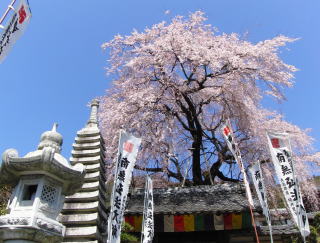 |
|
| ■Zazen(坐禅)/Sitting
meditation |
We hold a practice of Zen sitting meditation for
obtaining a serenity of mind.
Everyone can join easily so why don’t you experience ‘Zazen’. |
| Contents |
At first you will learn the rules of behavior(how
to sit and breath and mental attitude, then you can experience ’Zazen’
If you prefer, you can experience ‘Syakyou(写経)’, too. |
| Date and Time |
The second Sunday of every month.
8:00~9:00
(Except January and August) |
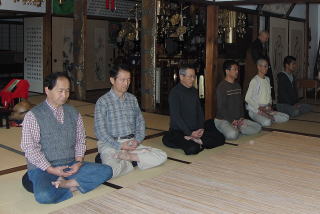 |
| Place |
Main hall of Rinyouji |
| Fees |
500 yen |
|
| We recommend wearing loose-fitting pants because you will be sitting for
more than 15 minutes and skirts are unsuitable. For more information, please
contact us. |
|
| ■Night Zazen(夜坐)/Sitting
meditation |
|
|
| Date and Time |
The fourth Saturday of every month.
20:00 ~ 21:00
(Except January and August) |
| Place |
Main hall of Rinyouji |
| Fees |
500 yen |
|
| We recommend wearing loose-fitting pants because
you will be sitting more than 15 minutes and skirts are unsuitable. |
| For more information, please contact us. |
|
| ■Shingyou(心経)/Reciting a Buddhist Sutra
|
|
Shingyou(心経)/Reciting a Buddhist Sutra
Reciting
a Buddhist sutra is called ‘Shingyou’ and we hold the practice of Shingyou.
You can recite a sutra in a silent place.
It might be a valuable time for you to be relaxed and have a peaceful
mind.
|
| Contents |
Sit erect with your legs folded under you and recite
a sutra. |
| Date and Time |
The first Saturday of every month
13:30~14:30
(Except January and August) |
| Place |
Main hall of Rinyouji |
| Fees |
Free |
|
| For more information, please contact us. |
|
| ■Shakyou(写経)/Hand
copying sutra
|
|
Making
a hand copy of a sutra is called ‘Shakyou’ and we hold the practice of Syokyou.
You can copy each character of a sutra while retaining mindfulness in a silent
place.
It might be a valuable time for you to be relaxed and have a peaceful
mind.
|
| Contents |
Sit erect with your legs folded under you and trace
a sutra with a pen or ink brush.
(We prepare these staffs) |
| Date and Time |
The fourth Saturday of every month
10:00 ~ 11:30
(Except January and August) |
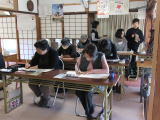 |
| Place |
Main hall of Rinyouji |
| Fees |
500 yen |
|
| For more information, please contact us. |
|
| ■Yoga
|
|
|
| Date and Time |
The second Saturday of every month.
9:00 ~ 10:00
(Except January and August) |
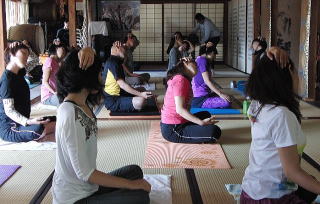 |
| Place |
Main hall of Rinyouji |
| Fees |
800 yen |
|
| We recommend wearing suitable clothes for exercising. |
| For more information, please contact us. |
|
|
■ACCESS
|
| ●Buses |
|
From Gifu(岐阜) |
Take a bus to Shirotari(白鳥), Gujyouhachiman(郡上八幡), Mino(美濃), Seki(関), Oobora(大洞)
Get off at Iwata Bus Stop and it is a 15minutes walk.
|
|
From Seki(関) |
Take a bus to Gifu. Get off at Iwata (岩田)Bus Stop and it is a 15minutes
walk. |
| ●By Car |
|
From Gifu(岐阜) |
Take Route 156, drive northward and turn left at the traffic light of
Iwata(岩田)
Turn right a block before Nagaragawa (長良川)riverside toll road |
|
From Kakamigahara (各務原)
|
Take Prefectural Road 93 (Kawashima Miwa Line) and drive
Northward.Cross Route 156 and turn right a block before Nagaragawa(長良川) riverside toll road
|
|
From Seki(関) |
Take Route 156, drive southward and turn right at the traffic light of
Iwata.
Turn right a block before Nagaragawa riverside toll road |
|
 |
|
|
坐禅にきてください。
Please come to the temple for meditation by Zazen
曹洞宗は禅宗です
So-to sect is Zen Buddism.
|
 |
|
インドのお釈迦様
Buddism was preached by Buddha in India
|
 |
中国の達磨様
It was handed down to China
Dharma was well known for sitting on the rock 9 years.
|
 |
日本へ伝えられました道元禅師様達が、大切にされました修行の一つが坐禅です。静かに坐ってみましょう。
.
Zazen Buddism was
handed down by Dougen to japan about
800years Ago.
Let’s try Zazen peacefully.
|
 |
|
坐禅作法
Zazen manners.
(曹洞宗宗務庁の資料を参考に作成)
(Create a reference document sect Soto-shu .)
|
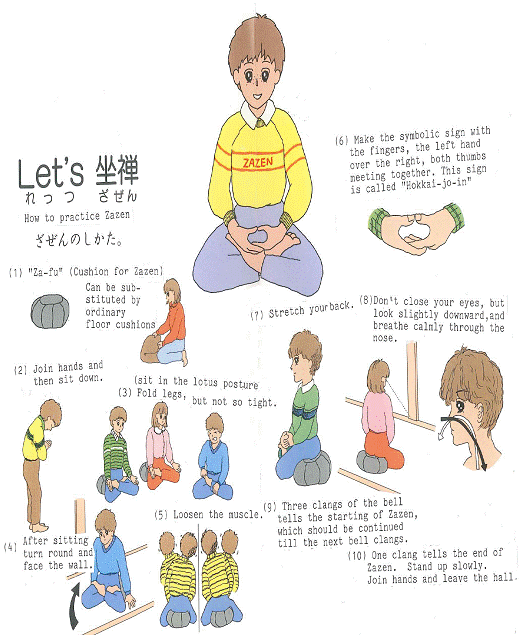 |